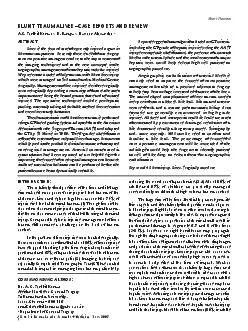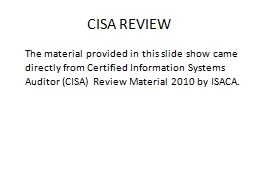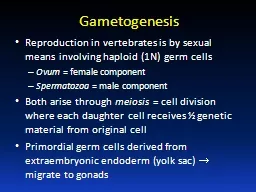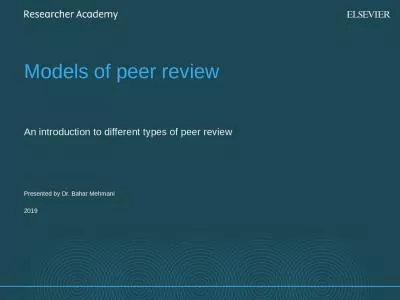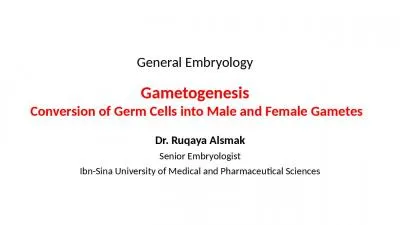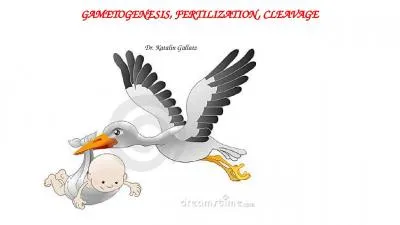PPT-Chapter 9 Review Gametogenesis
Author : DancingDragonfly | Published Date : 2022-08-03
The production of gametes sex cells Males spermatogenesis in the testes Females oogenesis in the ovaries Mitosis vs Meiosis Remember Diploid Contain the full
Presentation Embed Code
Download Presentation
Download Presentation The PPT/PDF document "Chapter 9 Review Gametogenesis" is the property of its rightful owner. Permission is granted to download and print the materials on this website for personal, non-commercial use only, and to display it on your personal computer provided you do not modify the materials and that you retain all copyright notices contained in the materials. By downloading content from our website, you accept the terms of this agreement.
Chapter 9 Review Gametogenesis: Transcript
Download Rules Of Document
"Chapter 9 Review Gametogenesis"The content belongs to its owner. You may download and print it for personal use, without modification, and keep all copyright notices. By downloading, you agree to these terms.
Related Documents


